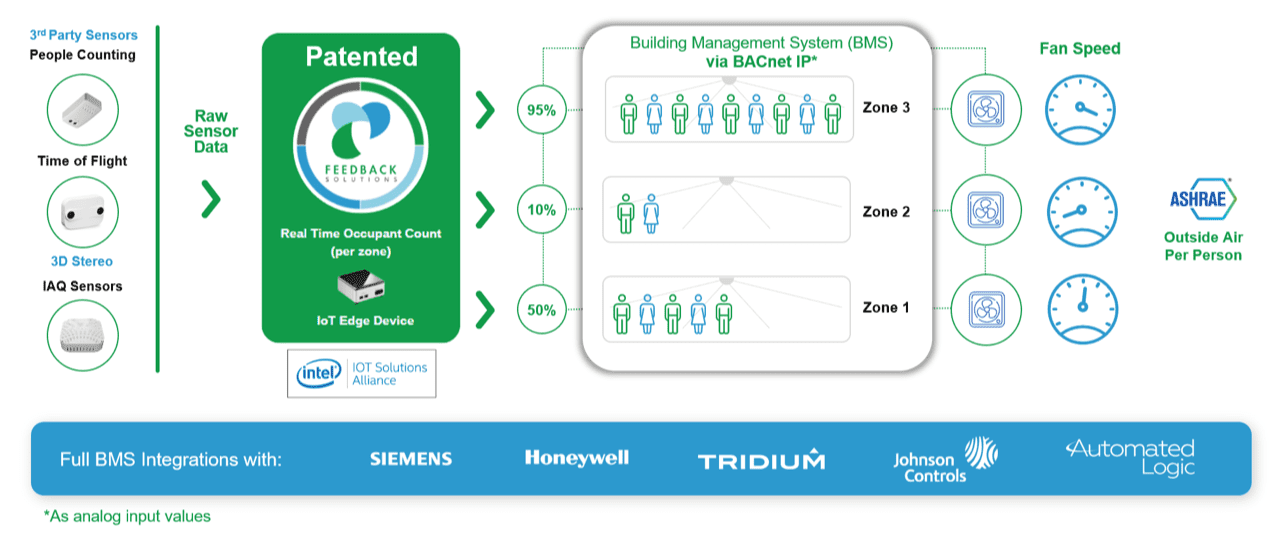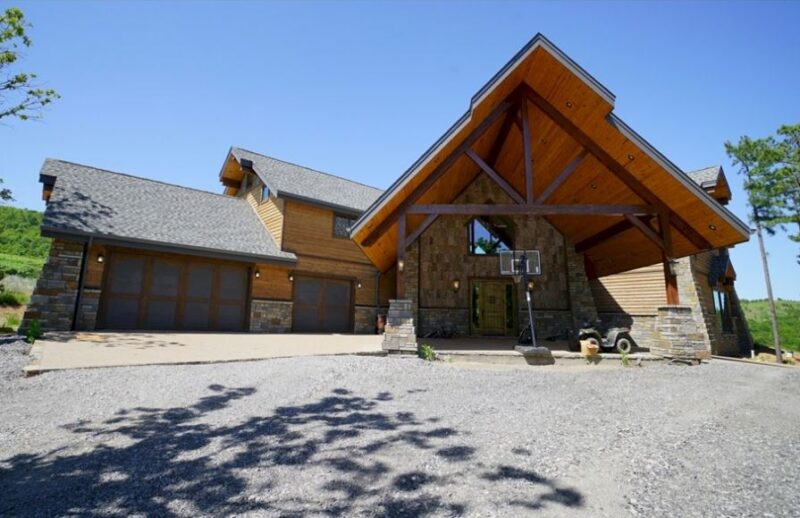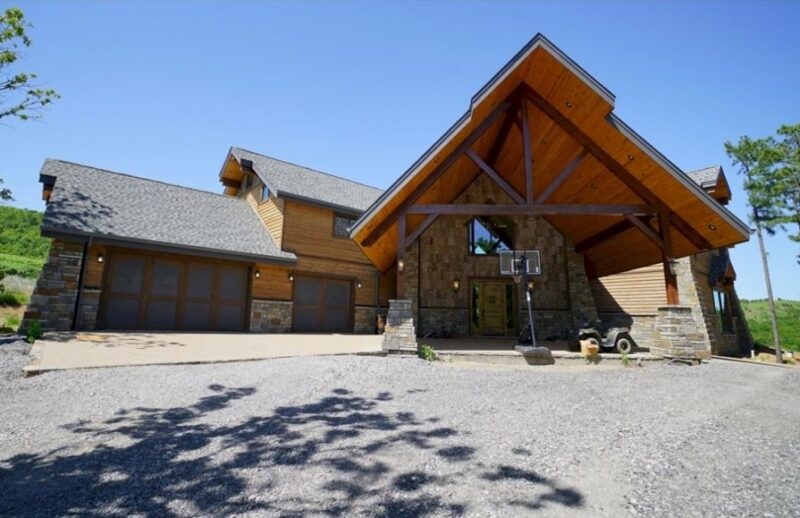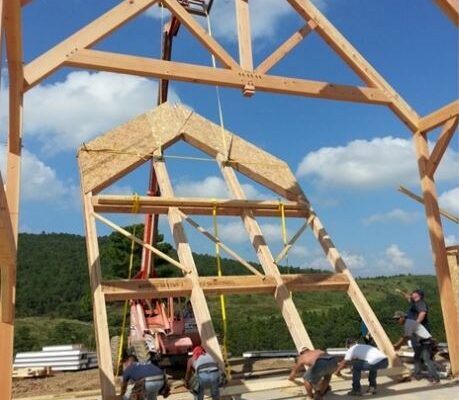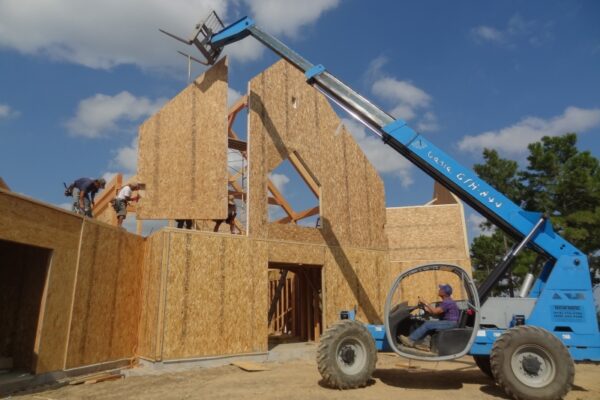Occupancy Intelligence for Energy Savings
Approximately 28% of annual global greenhouse gas emissions are generated by the operations of buildings. And heating, ventilation, and air conditioning (HVAC) systems alone contribute to 40% of the average commercial building’s energy consumption. More and more, high performance buildings are turning to data to curb energy use with cost-effective, easy-to-implement energy conservation measures. Feedback Solutions uses third-party people counting sensors, with a patented software platform, to optimize ventilation rates seamlessly, in real-time, based on actual occupant demand.
Continuously calculating highly accurate occupant counts within each HVAC zone in a building, Feedback Solutions communicates occupancy to the existing building automation system (via BACnet, cloud platform, or DDC controller). Then real-time adjustments can reduce the HVAC-related energy consumption by as much as 40%. This can save money, significantly reduce carbon emissions, and result in less wear and tear on critical HVAC equipment—all while meeting important ASHRAE standards for maintaining occupant health and comfort.
Feedback Solutions has completed multiple successful installations for universities (New York University), commercial landlords (Manulife Financial/John Hancock), and progressive municipalities throughout the US. This technology also attracts significant incentives from a number of utility companies. For example, Con Edison recently approved an incentive application—covering 50% of the project costs—implementing Feedback Solutions in a large New York library building.
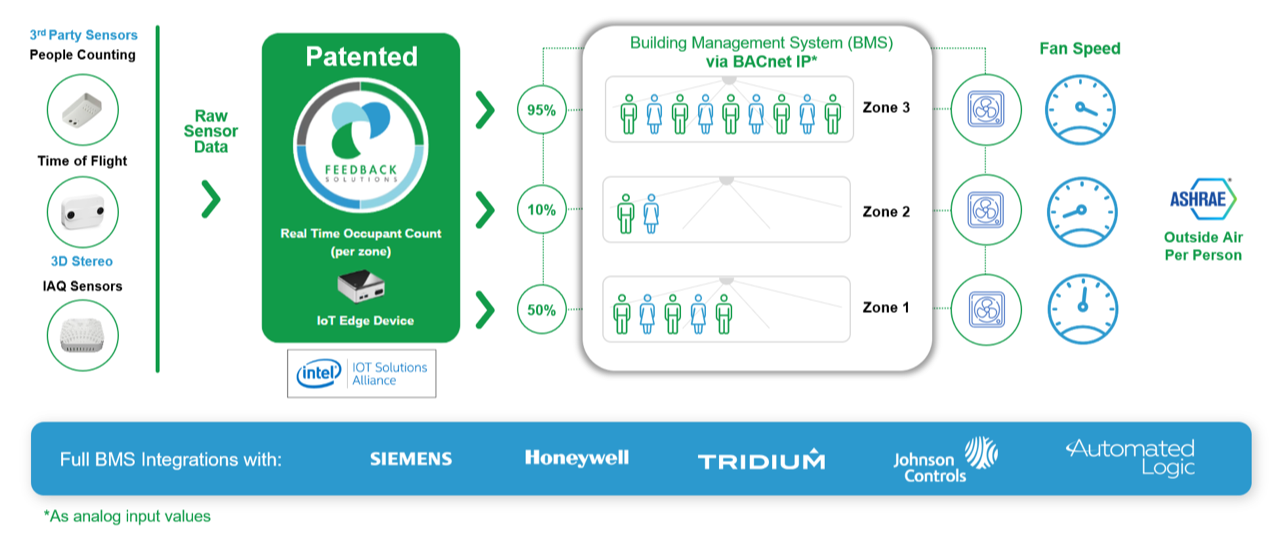
Retrofit solution
The over-ventilation of campus, municipal, and commercial buildings is both a prevalent and longstanding issue. The results achieved with Feedback Solutions tools produce compelling payback periods and ROIs for organizations seeking immediate greenhouse gas reductions without doing deep retrofits.
A building’s automation system is normally designed to bring in outside air, which it then heats or cools and circulates, based on the number of people in an HVAC zone. In the absence of accurate real-time occupant counts, the building automation system typically brings in the amount of outside air assuming “full” occupancy. This is almost never the case (even before the introduction of new trends like the hybrid back to work model).
As occupancy goes up and down in a zone over the course of a day, Feedback Solutions cues an automatic ventilation response. The significant savings and emissions reduction are produced by both fan energy reduction and thermal conservation. At the same time, Feedback Solutions also provides for a data-driven indoor air quality strategy that prevents under-ventilation.
How Feedback works
- Feedback selects the most appropriate and cost-effective people-counting sensors according to site conditions at the building.
- Next steps include hardware installation, appropriate zone creation, and assurance of the accuracy of the data. (Feedback is able to produce highly accurate real-time occupant counts, even where there are multiple entrances and exits, via their proprietary intelligent algorithm running on an Intel IoT edge device.)
- Zoned, real-time occupant counts are then delivered to the building automation system. Then once the sequence of operations has been defined, the HVAC equipment is optimized automatically, and seamlessly. This patented solution integrates easily with all the major building management systems.

Cleantech and proptech converge
The space utilization data that Feedback Solutions creates, can also be used to inform numerous operational decisions. Feedback provides customers with up to 10 customized reports—including analytics such as a comparison of peak occupancy over the course of a day, week, or month—providing visibility to how many people use a given facility and when. Thus, operations, security, marketing, and planning groups within a campus, municipality, or commercial real estate portfolio gain valuable insights custom to their operations.
USGBC-LA Net Zero Accelerator
Feedback Solutions joined the 2023 cohort of the Net Zero Accelerator (NZA), to benefit from learning from subject matter experts in marketing, business development, and networking. The NZA, a program of the U.S. Green Building Council–Los Angeles (USGBC-LA), focuses on piloting projects in real-world, trackable implementations, to drive measurable adoption of net zero solutions, today.
Since its founding in 2018, the accelerator has guided the success of 85 growth-stage companies in the cleantech and proptech space across the US and Canada. The program bridges the gap between net zero building policy and current technologies in use in both commercial and affordable housing sectors. The NZA builds awareness of viable solutions and market-ready innovations through marketing, media, events, and curated networking. Then shepherds the tech to market through onsite pilots with committed green building leaders, accelerating scaled adoption. The goal? Make net zero carbon, energy, water, and waste a reality for Los Angeles and beyond.
The author:
As Chief Marketing Officer of Feedback Solutions, Karen Smith focuses on helping facility operators understand and evaluate Feedback’s hardware-enabled software platform. Smith has extensive experience in the commercial real estate industry, both private and institutional owners, specializing in leasing, marketing, asset management, and capital budgets. She believes that property owners and managers engaging with cleantech initiatives seek easy-to-implement solutions that produce immediate results.

